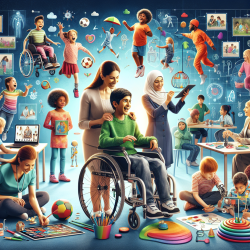Assistive Products and Technology to Facilitate Activities and Participation for Children with Disabilities: Insights for Practitioners

The role of assistive products and technology in facilitating activities and participation for children with disabilities is increasingly recognized. According to a recent study published in the International Journal of Environmental Research and Public Health, there are significant activity limitations and participation restrictions faced by children with disabilities, and assistive technology can play a pivotal role in mitigating these challenges.
Key Findings:
- Children and youth with disabilities face considerable difficulties in both familiar and unfamiliar environments.
- Assistive technology can alleviate some of these difficulties but is often underutilized or inaccessible.
- High-tech solutions and personalized assistive devices are particularly beneficial.
Practical Implications for Practitioners:
- Identifying Needs: Conduct thorough assessments to understand the specific needs of children and youth with disabilities. This involves gathering insights from the children themselves, their families, and professionals.
- High-Tech Solutions: Encourage the use of high-tech assistive devices, such as adaptive software and hardware, to enhance mobility, communication, and participation in social activities.
- Personalized Devices: Advocate for the development and use of personalized assistive devices that cater to the unique needs of each child. These can range from simple modifications to existing tools to innovative new solutions.
- Environmental Adaptations: Work on adapting both home and school environments to be more inclusive and accessible. This includes ensuring mobility aids are available and functional in all settings.
- Public Solutions: Push for public policies and community resources that support the accessibility and availability of assistive technology for children with disabilities.
Encouraging Further Research:
Practitioners should not only implement existing findings but also engage in ongoing research to discover new solutions. Collaborating with researchers, participating in hackathons, and utilizing living labs can lead to innovative advancements in assistive technology.
Conclusion:
Assistive products and technology are crucial for enhancing the participation and independence of children with disabilities. By understanding and addressing their specific needs, practitioners can significantly improve their quality of life.
To read the original research paper, please follow this link:
Assistive Products and Technology to Facilitate Activities and Participation for Children with Disabilities.
Citation: Mensah-Gourmel, J., Thépot, M., Gorter, J. W., Bourgain, M., Kandalaft, C., Chatelin, A., Letellier, G., & Brochard, S. (2023). Assistive Products and Technology to Facilitate Activities and Participation for Children with Disabilities. International Journal of Environmental Research and Public Health, 20(3), 2086. https://doi.org/10.3390/ijerph20032086










